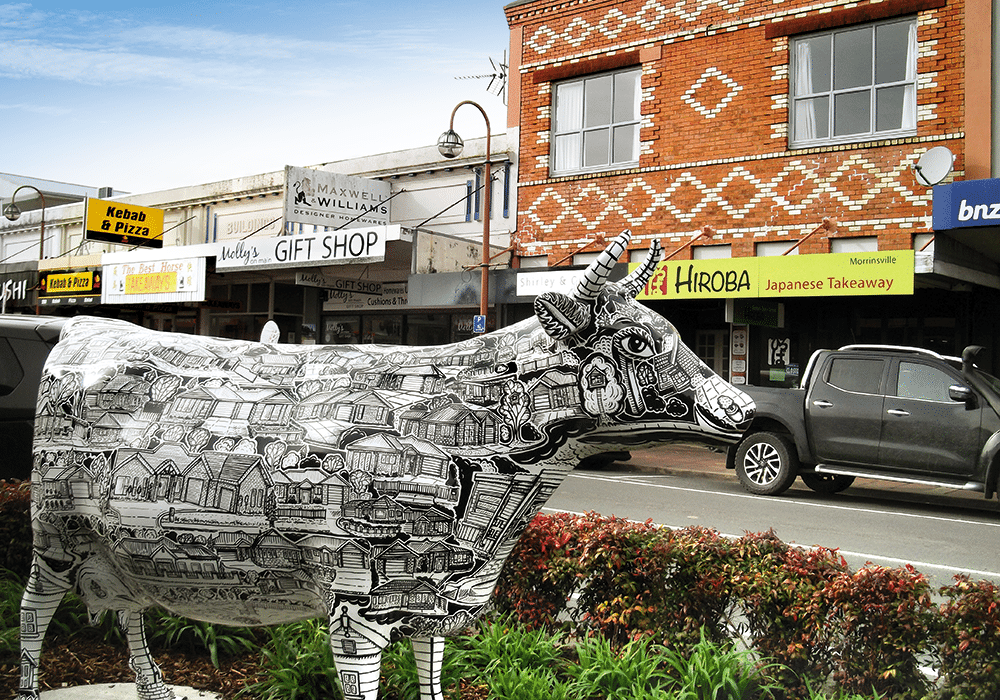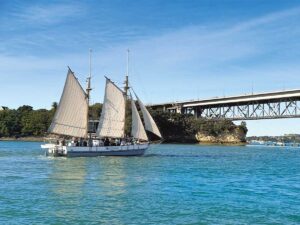Eleanor Hughes strolls the streets of a dairy town.
As we drove on SH26 from Hamilton ito Morrinsville, a mega black and white cow outside the Power Farming outlet caught our attention. There were two smaller ones near the next intersection, and by the time we reached the next one, I’d spotted another five. The block after, in the town centre, had even more. I lost count, trying to keep my eyes on the road. But not because they were running amok, or being driven through town and holding us up – this was a herd of sculptures.
The dairy trail
With a map from the i-SITE, we set off the next day to track the herd of 60 down. As most of them are on Thames Street, SH26, running through the town centre, it was an easy job. Outside the i-SITE we met ‘Kiwiana’, native birds and monarch butterflies painted on her sides. Over the road, ‘Tour de Cow’ stands at the front of JJ’s Burger Bar, cogs, bike parts and wheels colouring her flanks. She’s sponsored by Kaimai Cycles/Morrinsville Wheelers Cycling club. ‘The House Cow’ is covered in black and white houses, sponsored by Houghton Homes. Colourful stripes pattern ‘Betty’, and of course the town has to have a ‘MooLoo’, the Waikato rugby mascot. She’s painted yellow, red and black with a rugby field across her middle. Reaching Mabel the Mega Cow, 6.5 metres high, we turned back to do the other side of the road and then the side streets. There’s even one outside the police station, an ear tag reading ‘111’. With the slogan ‘Cream of the Country’, the town is the self-proclaimed ‘Dairy Capital of the World’. The cows were designed to put Morrinsville on the map, sponsored by local businesses and families. They’ve decorated the streets since April 2015, and the herd is still growing.
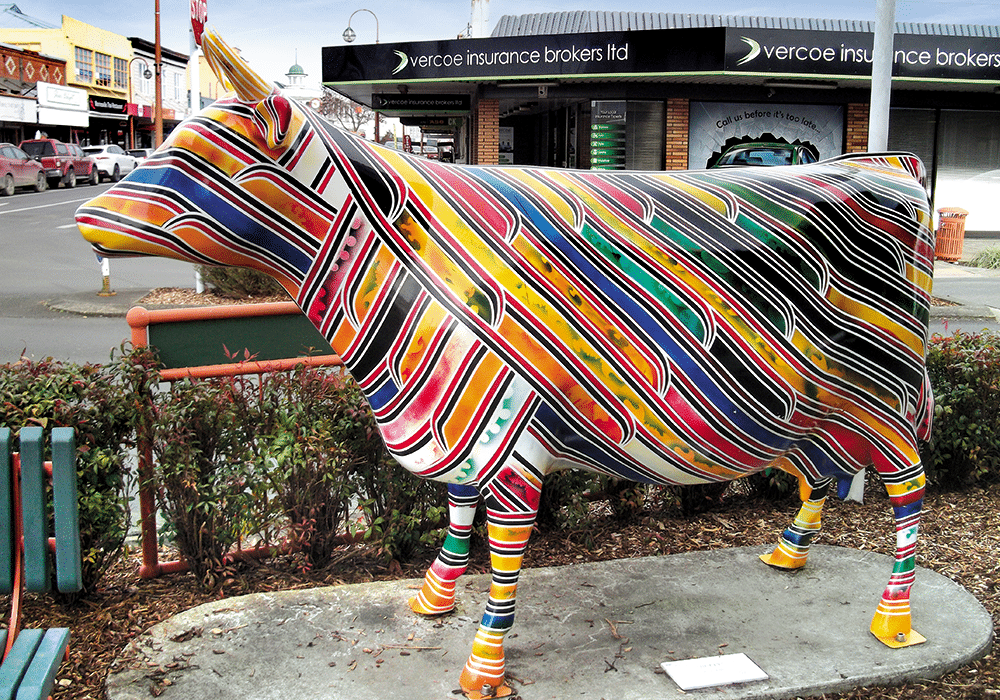
Heritage Trail
A Heritage Trail brochure is available from the i-SITE, the route taking around 1¼ hours to walk. The brochure gives details of historic buildings, although many are no longer standing and the trail has many ‘once the site of’ locations.
The wooden, two-storeyed Nottingham Castle Hotel remains, on the corner of Studholme and Thames streets. Built in 1914, it’s listed as Historic Place Category 1 by Heritage New Zealand. The building is grand, with a verandahed balcony running its full length, and a green-roofed belvedere.
Red brick facades can be seen on Thames Street above the verandahs that shelter the footpath. Above Bakehouse Cafe, the name of Dendy and Wilkins Ltd, Small Goods, Butcher, Bacon Curers, is still visible on the building. Cathay Takeaways and Pattison Jewellers now occupy the building marked ‘Gummers Buildings 1919’. Above a Chinese takeaway, white brick diamonds decorate a red-brick frontage which may have once housed the Morrinsville Herald Office – it’s a bit hard to tell from the map.
We found the Masonic Lodge, built in 1908 on Moorhouse Street, just down from the Rose Gardens where a sculpted cow lurks. On the other side of town, we wandered past the Fonterra Butter Plant in our quest to find the Dairy Company Laboratory, probably swallowed up by other buildings now on the site. Real cows grazed next door, only a block from the shops of Thames Street.
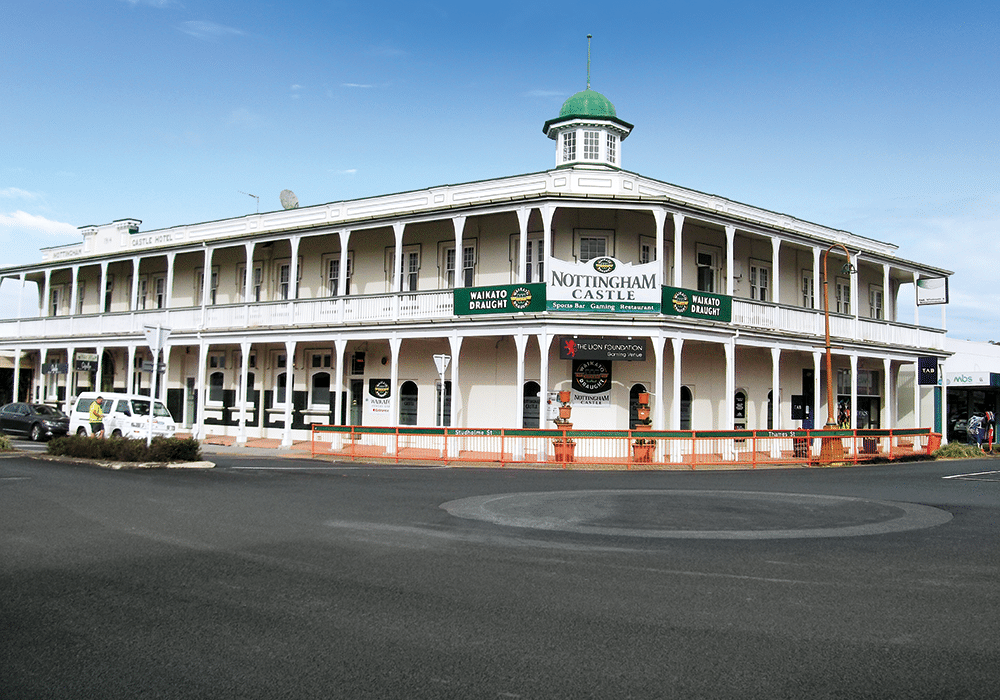
About town
The Wallace Gallery on Thames Street showcases New Zealand art. It’s housed in the former Post Office building, but is closed on Mondays so we were unable to visit.
If you’re interested in fashion, you may like to check out Annah Stretton HQ for fabrics or designer outfits. On-site is the Most Wanted Toasties Cafe, which is a delicious stop for cheese toasties with pickles, chutneys, and other combos, mac and cheese, cheese rolls, cheese scones and sweet stuff like cheesecakes.
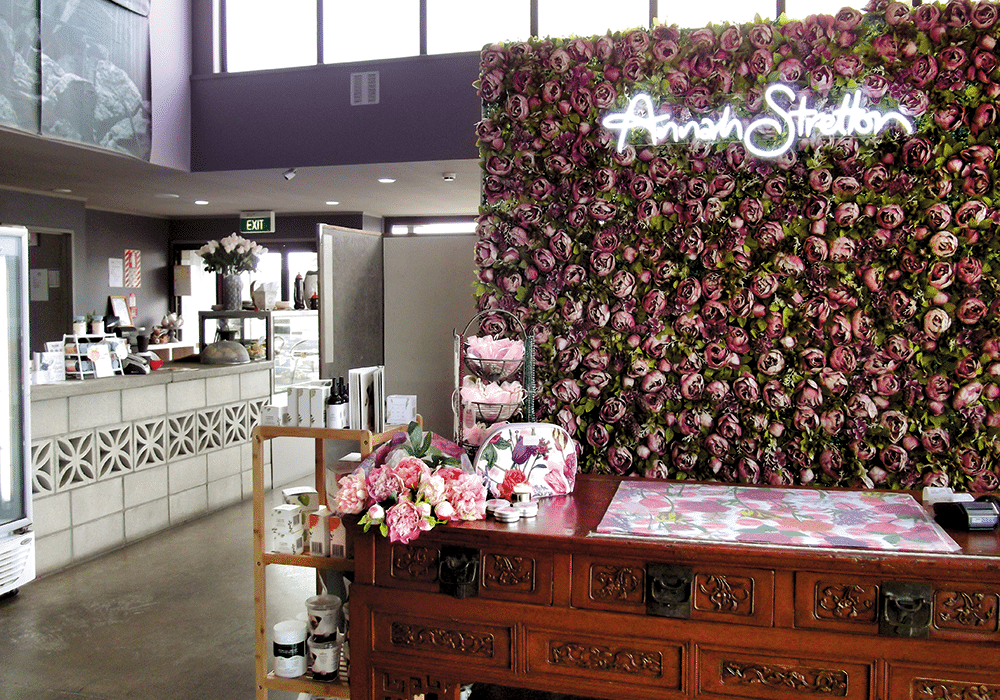
Morrinsville Museum
The museum is a great place to learn about the history of the town – named after Thomas Morrin – with volunteers giving guided tours. We learned that rail came to town in 1884, read of early townspeople and perused photos of local, fallen servicemen, and the generations of Kingmakers, who since 1858 have held the role of spiritual guardian and anointer of the Māori King.
A display shows the beginnings of the district’s dairy industry when creameries were built, dairy factories following in the 1920s.
The four-room, McDonald pioneer cottage, built around 1874, is furnished in the style of a late 1800s settler home, with some items that were actually owned by the McDonald family. The kitchen appears to have the original linoleum and coal range.
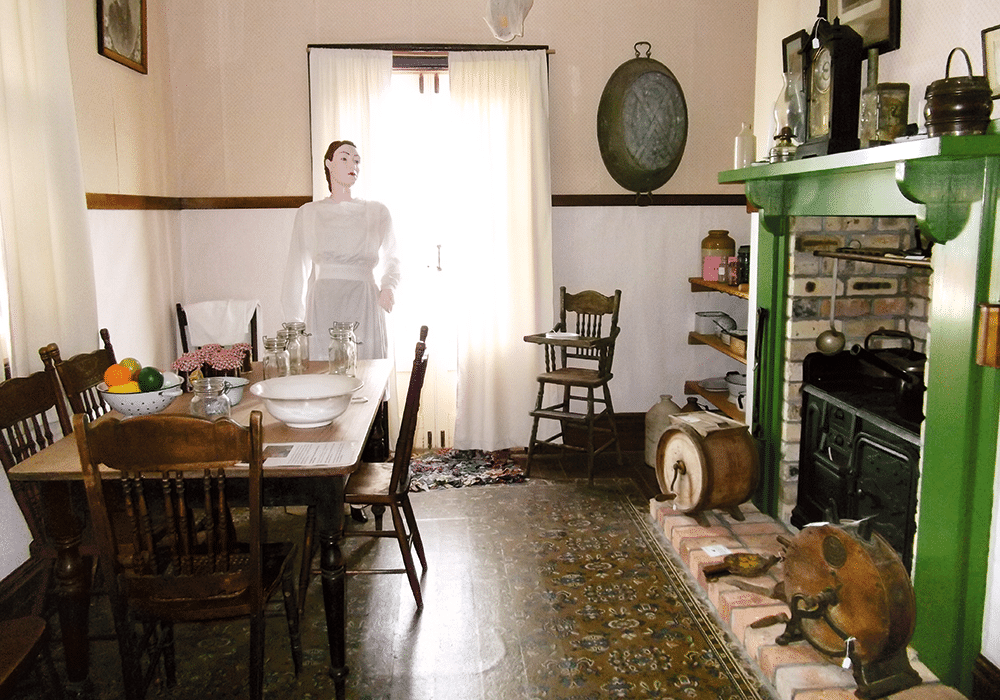
Morrinsville River Walk
The river walk is a picturesque 1.8km trail amongst open forest alongside the Piako River. The easy, 40-minute walk takes in a small waterfall near the Studholme Street end, and is only around 1km from the town centre.
The walk was a nice way to end a full day, before hitting the road for Cambridge. As we left, we took a last, slow drive past the Herd of Cows that had made us smile.
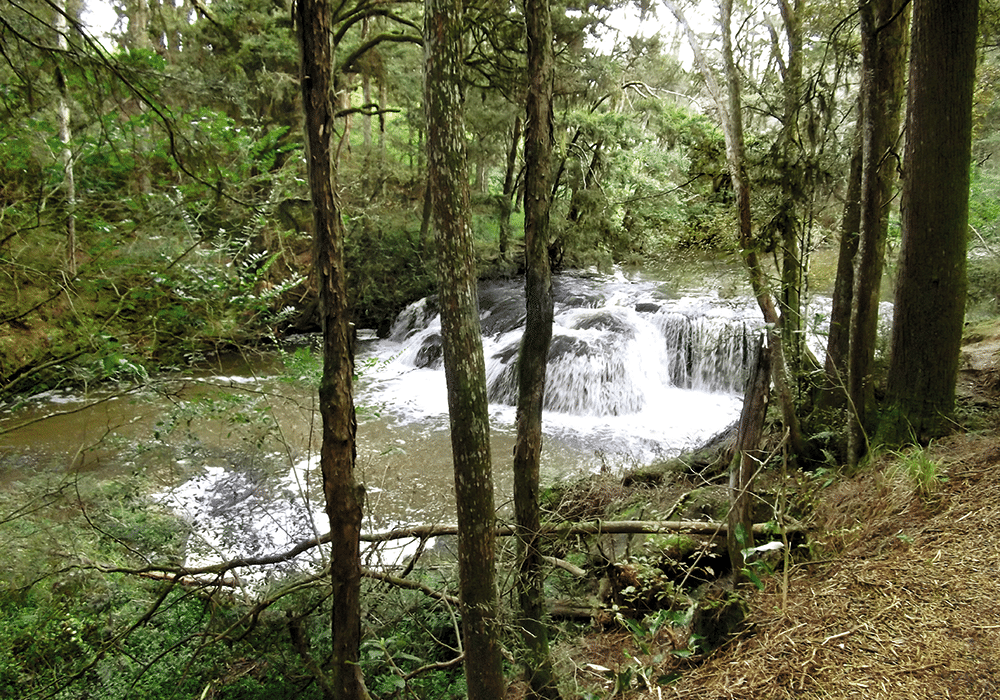
More Information
Freedom camping is available at Morrinsville Recreation Ground: see:

